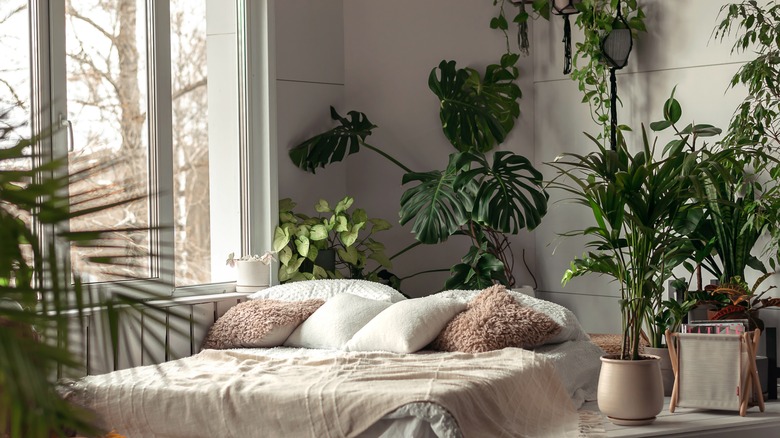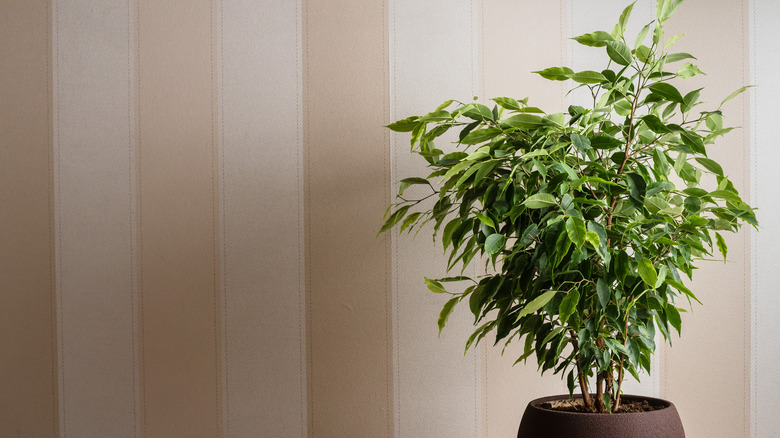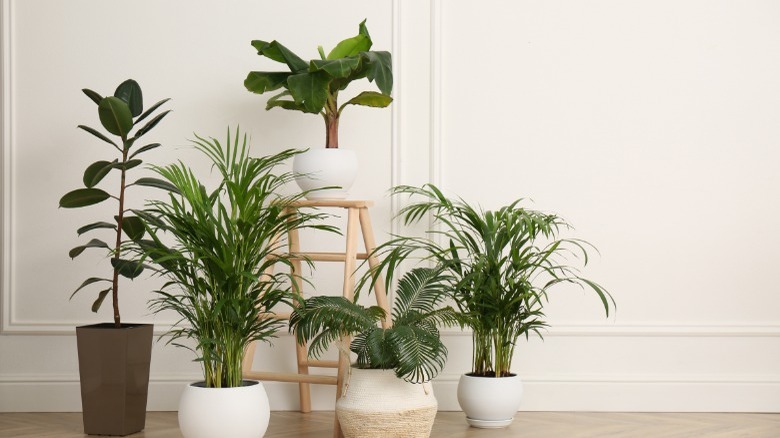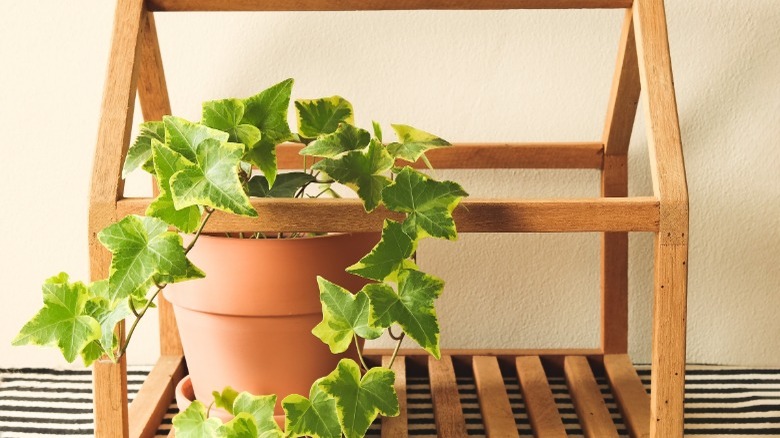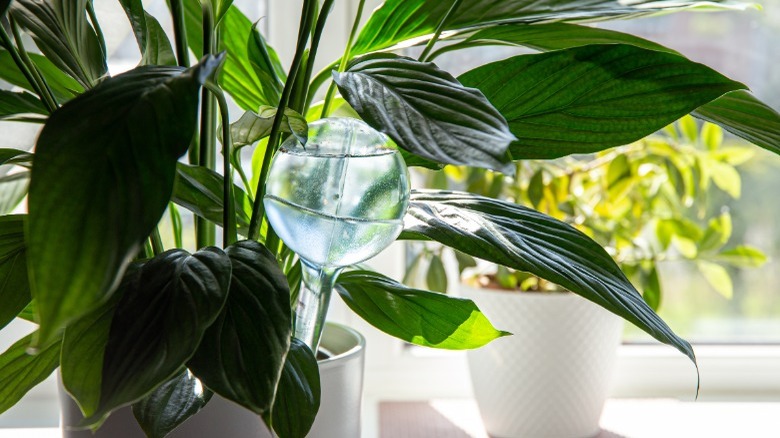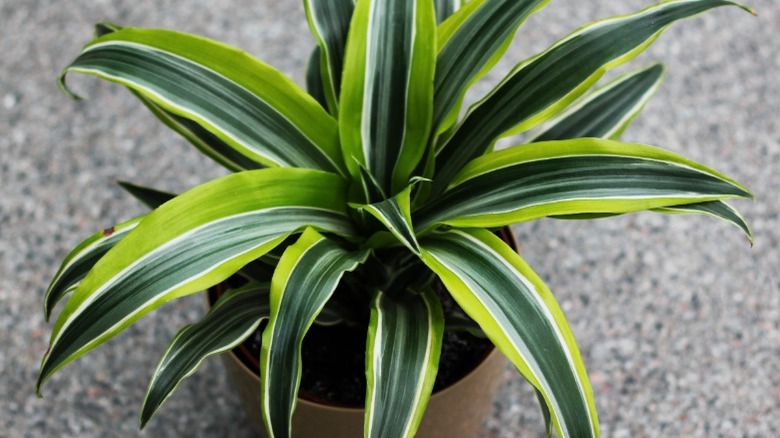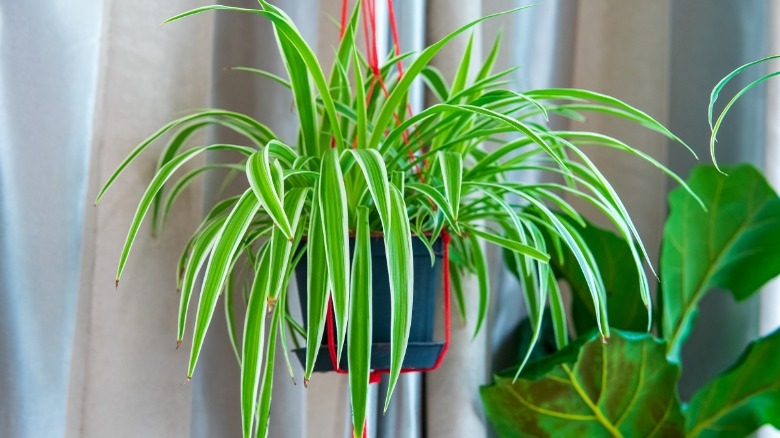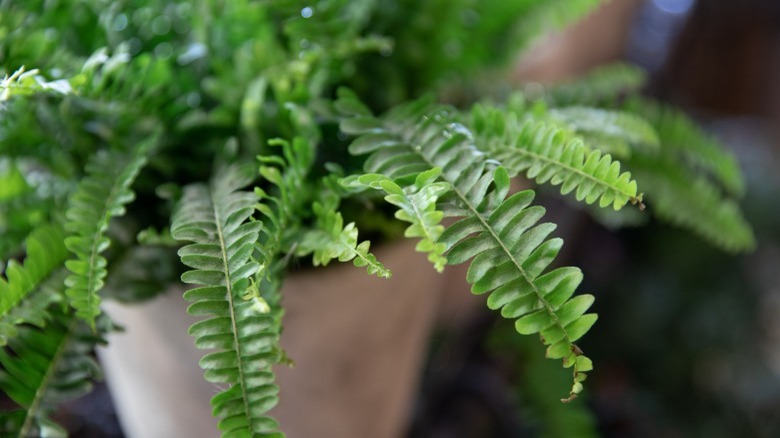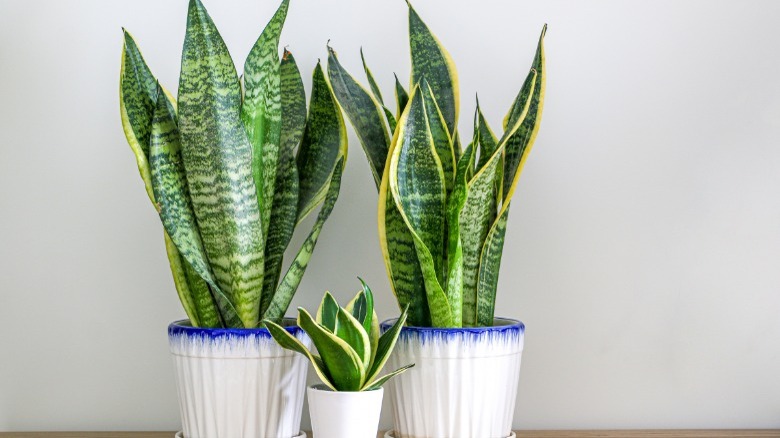8 Houseplants That Can Help Keep Your House Mold-Free
Mold in the home is a real concern for most homeowners today, especially now that we're aware of the dangers. Extensive mold spores in the air we breathe can cause respiratory problems and headaches, among other concerns. If anyone in your family suffers from allergies or has a compromised immune system, they could be at greater risk of developing more serious symptoms.
Chris Bonnett of Gardening Express tells Toms Guide, "Mold in the home is caused by excess humidity. Warm rooms, like bathrooms and kitchens, are at particular risk. Using plants to help keep mold at bay is a practical and natural way to control humidity and moisture in your home. How good a plant is at reducing humidity is all to do with its ability to absorb dew, fog, and other moisture through its leaves. This moisture then moves down to its roots. You will notice an improvement — and you'll have beautiful plants to enjoy too."
However, not all plants are created equal. There are some that are more effective purifiers than others and some air-filtering species can improve air quality by 60% (via Air Quality Inc). So, fill your home with some of these 12 houseplants to make your space fresher and more mold-free!
1. Weeping fig
The Weeping Fig is one of the plants on this list due to its inherent microbial properties which allow it to be great at preventing fungus or mold growth. The plant's stems and leaves contain phenolic acid, which stops the growth of fungi and mold. The microbial properties in the soil can even help remove harmful toxins from your air. These same properties also help it fight diseases, and it is a plant well known for its use in medicine. It's known for cleansing the air and releasing antioxidants. Through the process of photosynthesis, it absorbs toxins into its foilage and releases healthier oxygenated air.
It's also a plant known for its ability to grow in poor conditions, needing minimal light and water. It can be put in the bedroom to purify your sleeping environment. Larger trees are perfect to help cleanse the air in bigger spaces. It grows best with indirect light, and you should only water it only when the top few inches of soil have dried out. You can also use a spray bottle and mist the leaves during the hot summer months.
2. Palms
Many palms are great at preventing mold, such as the bamboo palm, lady palm, and reed palm. The way these plants do this is by absorbing the moisture from the air that can allow mold spores to thrive. Indoor palms are also a perfect choice to prevent other toxins in the home. However, you might want to avoid areca palms. This variety can actually inject humidity into your hair, potentially creating a more hospitable environment for mold spores.
Palms are said to be great in bathrooms, arguably the spot in the home where mold is found the most. Because palms are native to tropical regions, they will thrive in rooms with high humidity. They do best in bright but indirect light, and the soil must be kept moist nearly all the time, but make sure they're in pots with plenty of drainage. If in the right conditions, they can grow vigorously. So, you might need to stay up on trimming so they don't outgrow your space.
3. English Ivy
Mold can wreak havoc on everyone's respiratory systems, but allergy and asthma sufferers see the worst symptoms. Adding English Ive to your home can help better prepare the air for these more sensitive respiratory symptoms. This plant is able to significantly reduce the concentration of mold in the house and works by eradicating its particles from the air. One study found that ivy can reduce the number of toxins from mold-contaminated air by 78% in just 12 hours, per Allergy & Air. That gives you an idea of how beneficial and efficient this plant can be in your own home.
These vining houseplants are toxic to pets and small children, so be sure to hang them in high places and allow them space to climb. Ivies also like humidity and you can place them in areas of the house that are more prone to moisture. When the top inch of soil dries out you need to water it, but make sure the planter has good drainage. They like medium bright light best, so place them near a window with plenty of sunlight. Be careful not to over water or underwater it to help it thrive.
4. Peace Lily
The Peace Lily might be the most widely recommended houseplant for the prevention of mold in the home. On average, the mold spores and bacteria in the rooms with plants (such as Peace Lilies) are reduced by 50-60%. Peace Lilies are also fantastic at removing formaldehyde, a common volatile organic compound (VOC) found in the home. Formaldehyde is found in products like adhesives or glues, permanent press fabric, pressed wood, and smoke from cooking. High levels of this chemical can cause eye irritation, coughing, and may even be linked to cancer. Fortunately, Peace lilies can break down this toxin, leaving you with cleaner breathing air.
Peace Lilies are great for low-light conditions. Although they prefer bright, indirect light they can only need a few hours of it a day. For watering, allow the soil to dry out 2 to 3 inches down, then thoroughly water until it drains into a saucer. Remove the drain water afterward to avoid creating a damp mold breeding ground. They like humidity and are great for bathrooms, kitchens, or anywhere else you feel is appropriate in the home. However, beware of their toxicity to pets and children, so display them up high or hang them in baskets.
5. Dragon tree plant
Houseplants like the Dragon tree plant, also called Dracaena, also help reduce mold by releasing phytochemicals that suppress the spores. Many of the Dracaena varieties are good at reducing mold and toxins from the air inside our homes. They're also known to have antioxidant qualities which ease the effects of free radicals in the air. Dracaena is also great at removing benzene, another common VOC found in petroleum products, building materials, and furniture.
These plants come in multiple species that offer versatility in style throughout the house decor. The Dragon tree plant makes the ideal houseplant as it's very low-maintenance. You just need to water it every week or two. But make sure the pot has good drainage due to the plant's proclivity for root rot. It only needs about 4 to 6 hours of indirect light a day, so it's safe to put it in a fairly dark room. This plant looks great anywhere in the house, but like most plants that prevent mold, it prefers humid areas. It only needs to be repotted every few years and is slow-growing, making it super easy to manage.
6. Spider plant
Another great houseplant for the prevention of mold and allergens in the home is the Spider plant. It absorbs mold spores through its leaves. This lovely plant is a creeping vine with pointed leaves, terrific at purifying the air of mold and mildew. The Spider plant is also terrific at removing carbon monoxide, dust, and mold from the air. It's an efficient purifier — and can remove up to 90% of these toxins within just a couple of days. These are flexible so scattering a few of them throughout your home is an awesome way to clean your whole space.
You can place Spider plants in your bedroom for better breathing since they release oxygen at night. These plants are also 100% safe for children and pets, so they can be used in playrooms and kids' bedrooms too. They can be overwatered easily, but you do want to keep the soil moist in a pot with good drainage. Water about once a week, and make sure to give them a moderate amount of indirect light. These plants are easy to grow and difficult to kill, so they will often thrive even if you don't have a green thumb.
7. Boston Fern
The Boston fern, along with most ferns, is among the highly recommended houseplants for preventing mold and mildew. Ferns are great at reducing mold spores and toxins through their leaves by absorption. These amazing and beautiful plants are also great at removing additional pollutants like toluene. Toluene is another VOC common in nail polish, inks, glues, and stain removers. Too much exposure to this toxin can cause everything from anxiety to respiratory inflammation.
Ferns thrive in shade and love humidity, and they are easy to care for. Boston ferns are one of the plants that can tolerate low-light conditions and can be placed in the bathroom, laundry room, and kitchen. You need to keep the soil moist except during wintertime, and if you put the fern in a drier room then use a spray bottle of water to mist the leaves often. They like to have bright but indirect sunlight if possible, and with a little TLC and regular routine, the Boston fern will return the favor by keeping mold and toxins at bay.
8. Snake plant
Another fantastic houseplant for removing mold and mildew as well as other harmful chemicals is the Snake plant. Amazingly, Snake plants are also great at removing dust mites, helping people with these sensitivities. Dust mites and mold spores thrive in similar humid conditions and are common triggers for allergy sufferers. In fact, according to the Cleveland Clinic, one in five people are allergic to mold. And the National Library of Medicine reports that 20 million people have a dust mite allergy. So, a plant that can keep both at bay can be a game-changer.
Snake plants are also one of the few that produce oxygen at night, making them a perfect choice for the bedroom. They can also be placed in the home anywhere you know mold thrives. They're considered low-maintenance and are pretty much tolerant of any conditions. Whether you put them in bright light or low light or even forget to water them for a while, these hardy plants typically survive and thrive. In fact, overwatering is the only thing to watch out for, so you should allow them to dry out completely between waterings and make sure pots drain well.
